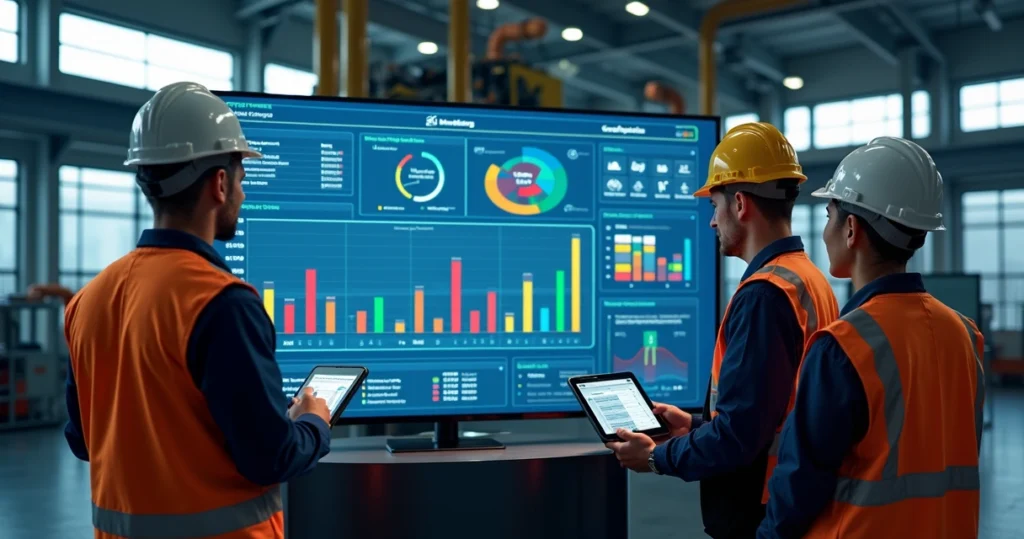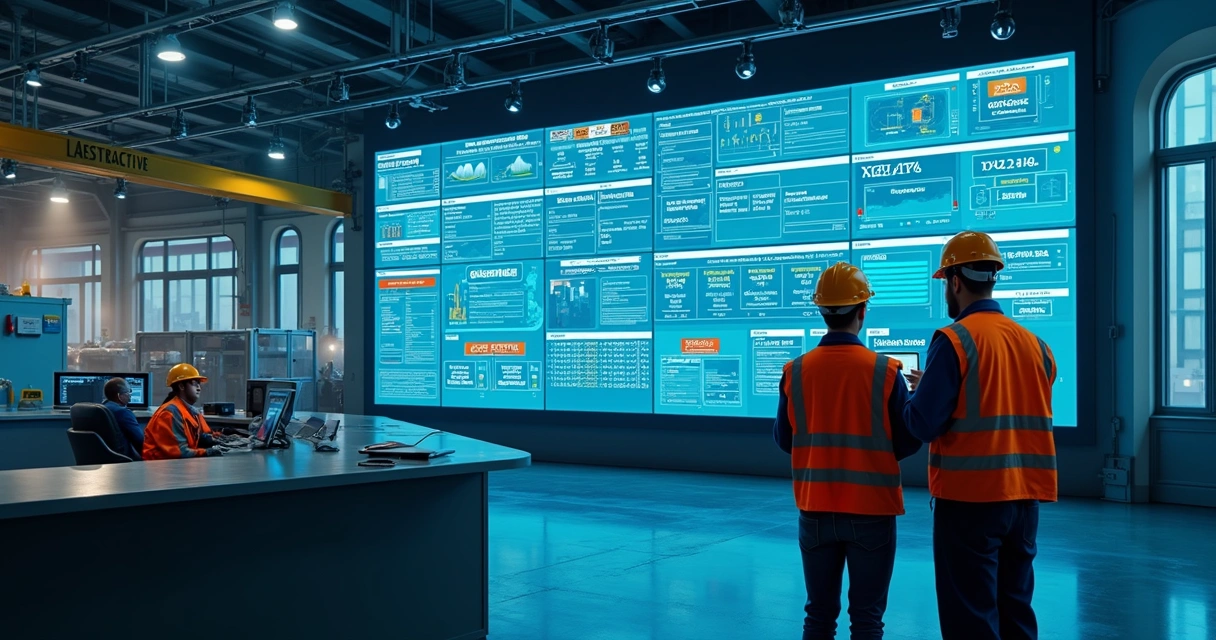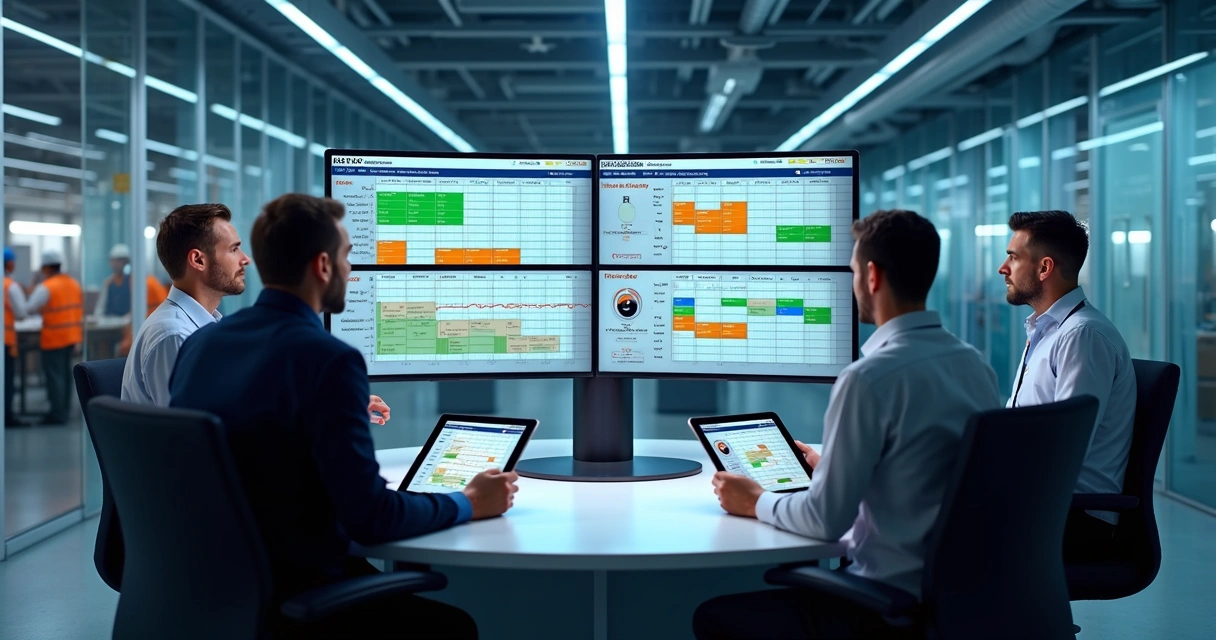Top 5 Workforce Management Solutions for Plant Maintenance Teams

Plant maintenance teams face a mountain of challenges. Coordinating people and shifts, tracking tasks, making sure everyone’s trained, and somehow staying ahead of both paperwork and unpredictability. It’s no wonder so many teams look for digital workforce management solutions to help untangle this knot. But with dozens of platforms out there, how do you pick what really fits your industrial reality? Not every shiny dashboard or promise of seamless mobility actually works when you’re down on the plant floor, surrounded by the hum of machines, and short-staffed. Let’s see how the best tools stack up—and which features you should keep an eye on for smoother days and fewer headaches.

Why workforce management matters in industrial maintenance
Let’s get this straight: workforce management is everything from assigning shifts and tracking tasks to recording certification renewals. The smallest slip in any of these can mean missed maintenance, compliance headaches, and higher risk. Or maybe just an annoyed supervisor at three in the morning. Managing your team well makes equipment last longer, prevents safety issues, and makes daily work more predictable—at least, a little bit.
Small process changes can prevent big breakdowns.
The challenge is that what works for a small facility won’t always scale to a sprawling, multi-site operation. That’s why solutions need to be flexible, adaptable, and—maybe most important—not add even more complexity. When plant maintenance teams look for support, they want something that fits their own size, team dynamics, and equipment landscape.
What makes a solution stand out?
Having seen dozens of implementations firsthand, I think the best platforms usually bring together several ingredients:
- Simple shift and labor tracking: Can you see who’s on, who’s off, and who’s qualified for what?
- Certification and training management: Alerts before someone’s certificate expires—and proof in one click.
- Integration with maintenance and asset systems: Can the tool ‘talk’ directly to your current setup?
- Mobile access: Techs shouldn’t have to walk back to the office just to check their assignments.
- Easy, clear compliance and reporting: When it’s audit time, are you ready?
Of course, there’s more, like automated scheduling or detailed analytics, but those five tend to make the biggest immediate impact on the floor. And yes, price matters too—but it’s rarely the only thing. Plants need tools that fit the reality of team turnover, skill gaps, fast responses, and all the rest.
How we selected these platforms
I looked for solutions that are widely recognized as robust, offer features aimed at the unique challenges of industrial maintenance, and have solid backing in user reviews and reports. I also focused on those bringing something a little different, not just a copy of the old paperwork—because honestly, no one wants to swap one type of paperwork for another digital version.
Let’s walk through five leaders, see their strengths, and break down what matters for your team.
1. advanced CMMS tools for the maintenance backbone
A modern Computerized Maintenance Management System (CMMS) does more than log work orders. The best combine asset tracking, preventive maintenance scheduling, and analytics in one dashboard, helping leaders spot problems before they grow. As described in recent surveys on advanced CMMS platforms, next-gen systems let you:
- Assign jobs based on real-time technician availability and skillsets
- Automatically generate work orders from sensor data or inspection rounds
- Link employee certifications and training records to specific equipment
- Receive reminders when certificates are near expiration
- Document all compliance steps for audits
- Provide dashboards accessible from both the office and mobile devices
It’s not just about “tracking”—it’s about creating a smooth flow where HR, maintenance leads, and the operators are all on the same page.
When your system brings everything together, surprises shrink.
At Prelix, we find that teams who unify CMMS labor tracking with instant diagnostics (like automatic root cause analysis) can prepare reports twice as fast, and bring down incident resolution times as well. Some of these modern systems now include AI-driven diagnosis, which bridges the gap between man and machine—so you don’t just log what broke, but understand why and what should change next. For more on using AI in root cause analysis, the RCA with AI guide for industrial teams is a solid resource.
2. connected worker platforms for plant collaboration
The “connected worker” approach is about making sure every person, from the shift supervisor to the first-year apprentice, has the information and support needed in real time. As detailed by Connected Worker Platform studies, these tools enable:
- Team communication across shifts and sites
- Mobile work order management—assign, update, and close tickets from the field
- On-the-job access to manuals, safety procedures, and collaboration boards
- Integration with asset management and HR databases
- Quick capture of equipment photos and voice notes for richer work reporting
- Push alerts for urgent tasks or compliance steps
This is about reducing missed handovers (“Wait, did John fix that conveyor, or not?”) and helping new employees ramp up faster. Sometimes, the difference between a connected team and a silod one is the difference between a minor hiccup and a plant-wide delay. There’s a big push toward AI-based operational control, but, to be honest, many plants still appreciate even basic mobile scheduling and work order updates. Simpler sometimes just works better.
3. dynamic scheduling platforms optimised for mobile

If your team spends more time out in the facility than at a desk, mobile-first scheduling is probably high on your wishlist. As highlighted in mobile workforce management research, these tools stand out by focusing on:
- Drag-and-drop shift planning, accessible from any device
- Automatic alerts when conflicts, overtime, or double-bookings happen
- GPS-powered technician tracking and route suggestions
- Real-time updates sent to team members’ phones or tablets
- Quick backfill options for sick calls or emergencies
- Integration with payroll and time-tracking
Modern scheduling fits your pace, not the other way around.
Plants with frequent shift rotations, outside contractors, or coverage gaps benefit most. Instead of chasing down people or searching spreadsheets, supervisors can spot shortages and fix things before the next shift even starts. In a fast-turnover setting, this can be the difference between stress and steady shifts.
4. workforce optimization with data-driven staffing
For those with larger teams or multiple plants, labor costs and staffing efficiency get trickier. AI-based workforce optimization has quickly gained ground, especially as shown in studies on workforce optimization. Platforms using these advances help managers:
- Forecast labor needs based on historical work order patterns
- Predict high-incident windows (like pre-shutdowns or seasonal peaks)
- Balance schedules to avoid excess overtime and burnout
- Reduce staffing costs (by 6-10%, as shown in some results)
- Automatically track compliance with labor agreements
- Reassign work based on skill, location, and certifications

For organizations with fluctuating team sizes or unpredictable workloads, this kind of data-driven planning is, frankly, a game changer. But it’s not just for managers—teams on the ground get more stability day-to-day, knowing schedules and resources will better match reality, not just a guess.
5. intelligent mobile tools for field technicians
The last piece in the puzzle is making sure your team in the field really has what they need at their fingertips. With tools like those highlighted in resources on technician enablement, you find:
- Guided checklists, so tasks are clear and complete every time
- Instant documentation of jobs, with photos attached
- Offline mode, for remote or hard-to-reach spots
- Automated risk and safety checks before starting tasks
- QR and barcode scanning for fast asset tracking
- Prompt reporting for incidents, near misses, or repairs
Technicians want truth at their fingertips, not just another login.
This is where Prelix comes in for many. With features enabling instant root cause analysis, detailed diagrams, and auto-filled compliance reports, teams move faster from “problem found” to “solution applied.” If you want ideas for implementing better RCA practices, the Prelix English blog offers practical tips for maintenance leads thinking about the next step in team enablement.
Key selection criteria for plant maintenance teams
You may look at dozens of demos and shiny feature checklists. In the end, what matters is fit. Here’s a quick way to judge which workforce management solution is worth bringing into your real, working world:
- Plant size: Large operations usually need bulk scheduling and data-driven optimization; small ones may prefer rapid, simple mobile tools.
- Team turnover: High turnover suggests automated training, onboarding, and credential tracking are must-haves.
- Training and certifications: If your work is regulated, look for automated renewal alerts, digital record-keeping, and an easy audit trail.
- Integration: Plug-and-play works best; if you have ERP or existing CMMS, native integration saves headaches.
- Mobile needs: Field-heavy teams need offline access, real-time alerts, and mobile scheduling—not just a web version.
- Reporting complexity: Plants under strict compliance or parent company controls benefit from auto-filled reports and pre-set audit formats.

It’s not just about picking the fanciest system, but the one that fits how your plant really works. If you’d like to understand the practical side of root cause analysis and its impact on workforce management, the practical guide to industrial RCA is helpful, with direct advice from plant teams themselves.
Where does Prelix fit?
While the solutions above are powerful in their own right, Prelix brings something unique by focusing on turning equipment failures into fast, usable insights for teams. With instant diagnosis of failure causes, automated reporting, integration with existing maintenance systems, and an easy learning curve, Prelix lowers risk and strengthens the safety net—something that matters when the stakes in plant maintenance are high. It’s built to fit diverse team sizes, adapt to different training needs, and support the real-world day-to-day of industrial operations. The AI-driven analytics and reporting help teams stay ready for both planned and surprise audits.
For those who want a resource in Portuguese, the Prelix blog em português is full of practical advice for industrial teams working in Brazil and beyond.
Final thoughts
No workforce management platform is right for every plant, but the rise of AI, integrated mobile tools, and real-time compliance tracking has changed what maintenance teams can expect from their digital toolbox. Whether you’re searching for smarter scheduling, easier certification management, or deeper insights into why things break, today’s options bring new possibilities.
Better tools make better days—for people and machines.
Ready to see a different approach in action? Start a conversation with us at Prelix, get to know our support for industrial maintenance teams, and see how your operation could turn information into real, simple improvements. Experience how data can be transformed into decisions that last.
Frequently asked questions
What is workforce management for plant maintenance?
Workforce management in plant maintenance means organizing how teams, shifts, and work are matched in an industrial setting. This includes tracking who is available, making sure workers have the right certifications for each job, coordinating shift changes, managing leave and overtime, and logging everything needed for compliance and reporting. It covers both the scheduling side and the parts related to safety, documentation, and employee skill tracking. Think of it as the operating system that keeps people, not just machines, running smoothly.
How to choose the best solution?
There’s no perfect formula—every plant is its own little world. Practical steps: look at plant size, typical workload swings, how rapidly your team changes, and what regulations you have to meet. If training and certifications matter a lot, pick something with automated reminders and easy record-keeping. If your teams are always on the floor, mobile access matters most. Ask if a tool connects to your current maintenance systems; switching between platforms slows everyone down. Start with a pilot, gather feedback from your team, and don’t just buy for the features—buy for the day-to-day feel.
How much do these solutions cost?
Prices vary, from free basic apps for small teams to high-end enterprise platforms. Some charge per user, others per site or by feature tier. Generally, monthly or annual licensing is common, with mobile access or advanced analytics costing more. It’s worth asking about integrations and support, since those sometimes come with extra fees. Most providers offer demos or trial periods. Check your long-term needs—buying what you’ll actually use is usually cheaper than going for the biggest suite on the market.
Are these tools easy to use?
Ease of use really depends on the system. The best ones are simple enough that a technician can pick up a tablet and log a task on their first day. Some platforms have a learning curve, especially those with deep analytics, but most now offer mobile apps that guide you step by step. Feedback from actual users is the biggest clue—if people on the floor like it, that tells you something. Training and responsive support make all the difference when rolling out new tools.
What features should I look for?
You want clear shift scheduling, labor tracking, and simple mobile access for field teams. Certification management—so no one’s working unsafe or out of compliance. Integration with your current maintenance or asset tools helps avoid extra manual entry. Auto-generated reporting and real-time dashboards make everyone’s lives easier, managers included. If safety is front and center in your plant, features for incident logging and digital checklists are a must. Start with the gaps you feel today, then choose a platform that covers those first.
